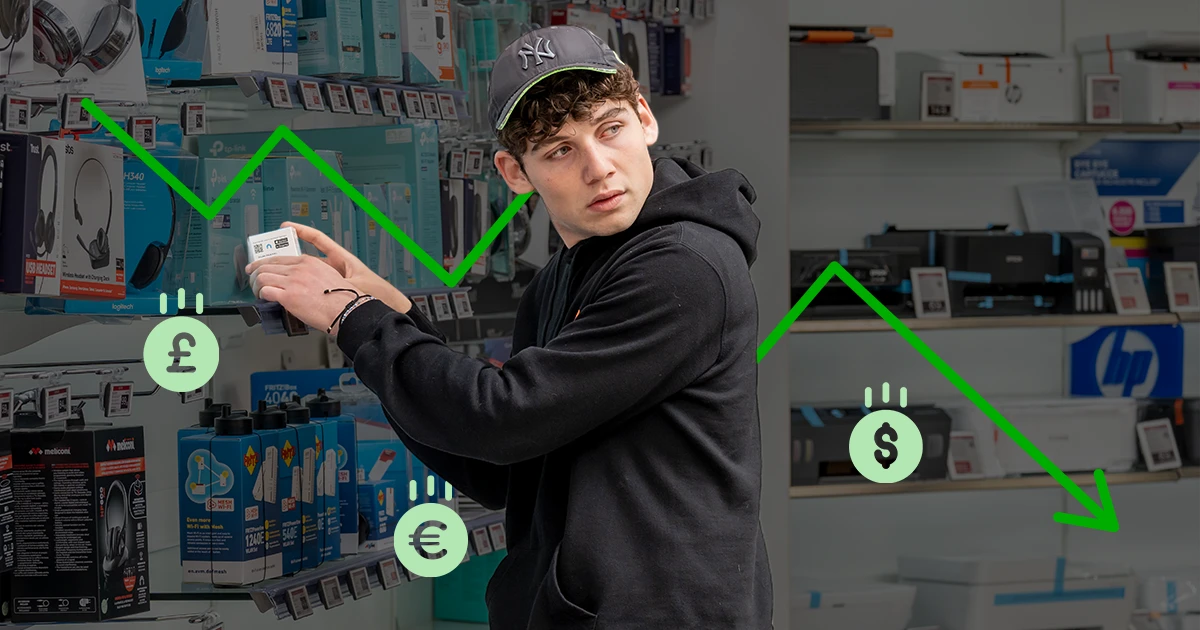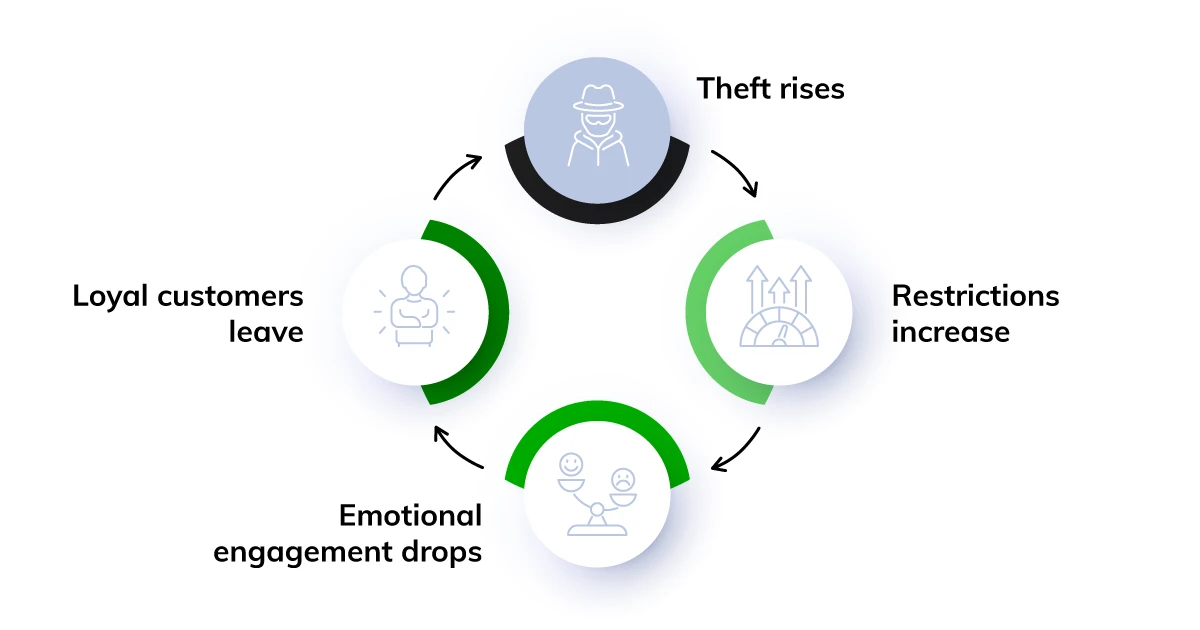
Most retailers track theft like any other line item. But when was the last time we asked how theft makes customers feel?
In retail, theft is often treated as an operational reality. For many large stores, the financial impact is within “acceptable” limits — measured, managed and folded into performance metrics. But focusing only on shrinkage and loss figures misses a critical point:
Theft doesn’t just hurt your business. It impacts your customers.
The hidden impact of theft
Picture this: a mother shopping with her two children notices a man quietly slipping merchandise into a bag. Her children see it too. She cuts her shopping short and leaves feeling uneasy. She doesn’t come back the next week.
This isn’t rare. In fact, in our consumer report, we found that 5 out of 8 shoppers say they’ve witnessed someone stealing in a store. That’s a majority. It creates discomfort, mistrust and in many cases, drives people away.
And when you consider that we also found that 80% of customers choose where to shop based on how safe they feel, the presence of theft isn’t just a loss prevention issue — it’s a brand experience issue.
Customers notice more than you think
People come to physical stores for more than just products. They come for the environment, the energy and the human connection.
But when theft becomes visible, that sense of trust breaks.
Customers don’t want to feel like they’re shopping in a space that’s out of control. And they certainly don’t want to bring children, friends or family into a space that feels unsafe. Even if the financial loss is tolerable, the loss of comfort, loyalty and footfall is far more difficult to quantify — and far more damaging over time.
When Prevention Becomes a Barrier
In response to rising theft, stores often turn to obvious, physical deterrents:
- Locked cabinets
- Display models only
- "Ask for assistance" notices
- Overbearing signage or security presence
While these strategies may prevent loss, they also interrupt the very reason customers come in‑store in the first place.
85% of shoppers visit stores to physically interact with products. They want to hold, test, try, and build a connection. If everything is behind a barrier, that connection is lost.
This creates a frustrating loop:
- Theft rises → restrictions increase
- Restrictions increase → emotional engagement drops
- Engagement drops → loyal customers leave
- Loyal customers leave → investment decreases
- Investment decreases → opportunities for theft increase
- Opportunities for theft increase → theft rises

Rethinking loss prevention
There’s a better way forward.
Retailers can — and must — design environments that are both secure and emotionally open. That means exploring more discreet, non‑intrusive approaches:
- Engaged, well-trained staff presence
- Smart technology that works in the background
- Store layouts that subtly encourage honest behaviour
- Calm, well-communicated safety practices that build trust
Loss prevention doesn’t have to be about locking everything away. It can be about creating spaces that protect what matters most — not just stock, but the in-store experience.
Final Thought
Theft will always be part of the retail landscape. But how we respond to it matters.
When we treat theft as a customer issue — not just a financial one — we start making smarter, more human choices.
The stores that get this balance right won’t just reduce shrink. They’ll retain loyalty, build trust and keep people coming back — not because they have to, but because they want to.

Ian Rowan
Previously the UK and Ireland Country Manager at Wildix, Ian’s team was the first to dream up x‑hoppers after uncovering a retail client’s unique communication needs. Ian now sets the direction for x‑hoppers globally, leading the team with his sharp wit and enviable skills backed by 30 years of industry experience.
Ready to maximize the potential of your stores?
Get in touch, and we’ll help you enhance operations, boost efficiency, and drive more sales.